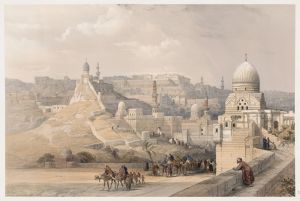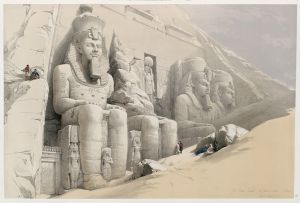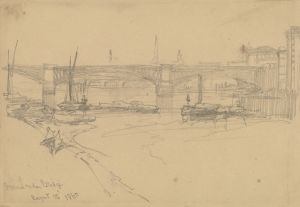
Grand entrance to the Temple of Luxor.
A hand-painted replica of David Roberts’s masterpiece Grand entrance to the Temple of Luxor., meticulously crafted by professional artists to capture the true essence of the original. Each piece is created with museum-quality canvas and rare mineral pigments, carefully painted by experienced artists with delicate brushstrokes and rich, layered colors to perfectly recreate the texture of the original artwork. Unlike machine-printed reproductions, this hand-painted version brings the painting to life, infused with the artist’s emotions and skill in every stroke. Whether for personal collection or home decoration, it instantly elevates the artistic atmosphere of any space.
David Roberts' painting Grand Entrance to the Temple of Luxor is a notable work created during the 19th century. Roberts, a Scottish painter born in 1796, is renowned for his detailed and evocative depictions of architectural and historical sites, particularly in the Middle East and North Africa. This painting is part of his extensive body of work that emerged from his travels to Egypt and the surrounding regions during the 1830s.
The artwork portrays the grand entrance of the Temple of Luxor, an ancient Egyptian temple complex located on the east bank of the Nile River in the city of Luxor (ancient Thebes). The temple, primarily dedicated to the god Amun, was constructed during the New Kingdom period, with significant contributions from Pharaohs Amenhotep III and Ramesses II. Roberts' painting captures the monumental scale and intricate details of the temple's architecture, including the towering pylons, colossal statues, and hieroglyphic inscriptions that characterize the site.
Roberts visited Egypt in 1838–1839 as part of a larger expedition to document the region's historical and cultural landmarks. During his journey, he created numerous sketches and studies, which later served as the basis for his finished paintings and lithographs. His works were widely acclaimed for their accuracy and artistic merit, offering European audiences a glimpse into the grandeur of ancient Egyptian civilization at a time when interest in Egyptology was growing.
The painting reflects Roberts' meticulous attention to detail and his ability to convey the atmosphere of the location. He often included figures in his compositions to provide a sense of scale and to depict the daily life of the local population. In this work, the interplay of light and shadow emphasizes the temple's architectural features, while the surrounding landscape situates the structure within its broader environment.
Roberts' paintings, including Grand Entrance to the Temple of Luxor, were later reproduced as lithographs by Louis Haghe, a skilled lithographer. These prints were published in a series titled The Holy Land, Syria, Idumea, Arabia, Egypt, and Nubia between 1842 and 1849. The series was highly influential, shaping Western perceptions of the Middle East and North Africa during the 19th century.
Today, Roberts' works are valued not only for their artistic quality but also for their historical significance, as they provide a visual record of sites that have since undergone changes due to time, restoration, or modern development. Grand Entrance to the Temple of Luxor remains an enduring example of Roberts' contribution to the documentation and appreciation of ancient Egyptian heritage.





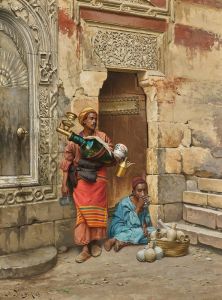
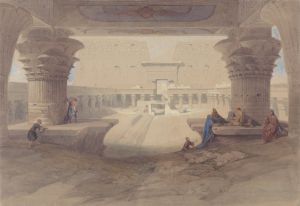
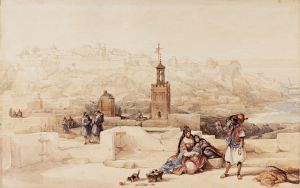
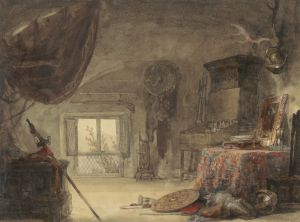
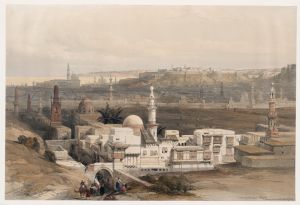
![Excavated temples of Aboosimble [Abû Sunbul], Nubia.](/imgs/217481/s/david-roberts-excavated-temples-of-aboosimble-abu-sunbul-nubia-2ca5e7e8.jpg)
![Interior of the mosque of the Metwalys [Metwalis].](/imgs/217497/s/david-roberts-interior-of-the-mosque-of-the-metwalys-metwalis-d41ed7bd.jpg)
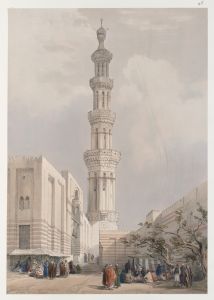
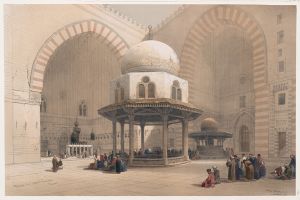
![One of two colossal statues of Rameses [sic] II. Entrance to the Temple at Luxor.](/imgs/217522/s/david-roberts-one-of-two-colossal-statues-of-rameses-sic-ii-entrance-to-the-temple-at-luxor-473c42e1.jpg)
